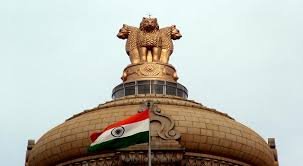This judgment by the Supreme Court of India addresses a civil appeal concerning the reduction of compensation for orange trees in a land acquisition case, specifically focusing on the application of a multiplier. The case originated from land acquisition proceedings in village Khanapur, District Akola.
The land, which included 42 orange trees, was acquired under a notification issued on 22nd August, 1995, under Section 4 of the Land Acquisition Act, 1894. The appellants (landowners) challenged the award under Section 18 of the Land Acquisition Act, 1894. The Reference Court applied a multiplier of 15 for calculating compensation for the orange trees, awarding Rs. 3,15,000/-.
However, the High Court, in its judgment dated 17th September, 2020, reduced the multiplier to 10, thereby reducing the compensation for the 42 orange trees to Rs. 2,10,000/-.
Crucially, the appellants highlighted that other landowners in the same village, whose lands were acquired under the same notification, had been granted compensation based on a multiplier of 15 by the High Court in an earlier, separate judgment.
Law Involved
The primary law involved is the Land Acquisition Act, 1894, particularly Section 18, which allows landowners to seek a reference for enhanced compensation.
The judgment also refers to legal precedents regarding multiplier application:
Bilquis v. State of Maharashtra: This case adopted a 10-year purchase as a multiplier based on “in the facts and circumstances of the case,” but it was clarified not to be a binding precedent on all courts under Article 141 of the Constitution.
Ramakrishna Reddy: This case established a general trend of applying a multiplier of 8 to 10 for plantations/fruit orchards and 10 to 12 for agricultural crop land, with higher (12 or 13) or lower (8) multipliers being justified in the presence of special circumstances.
The Court noted that the standard multiplier of 8 or 10 should consider the nature, standard, and position of the orchard, and special circumstances can justify a higher or lower multiplier.
Reasoning
The Supreme Court observed that the High Court had modified the compensation on the sole ground of reducing the multiplier applied to the orange trees.
The Court found it discriminatory that landowners similarly situated should receive different compensation.
It was highlighted that the High Court, when reducing the multiplier for the appellants, was not apprised of its own coordinate Bench’s earlier decision (dated 27th November, 2019) that had affirmed a multiplier of 15 for other landowners in the same village, for similar uprooted orange trees.
The Court noted that the orange trees were 3 to 4 years old at the time of evidence, and expert reports indicated a life span of up to 30 years with periodic yields for 15 to 20 years.
Given the evidence and the precedent set for other landowners, the Court found no tenable reason to reduce the multiplier from 15 to 10 for the appellants.
Holding:
The Supreme Court allowed the appeal, setting aside the High Court’s modification.
It ruled that the multiplier of 15 should be applied for determining compensation for the orange trees. Consequently, the compensation for the 42 orange trees was restored to Rs. 3,15,000/-.
The respondent (Vidarbha Irrigation Development Corporation) was directed to pay the appellants the balance sum of Rs. 1,05,000/- within eight weeks, along with interest at 6% per annum from 17th September, 2020, until the payment is made. In case of default, the interest rate will increase to 9% per annum.
SARSWATABAI MOTIRAM TAYADE AND OTHERS V. VIDRABHA IRIGATION DEVLOPMENT CORPORATION & OTHERS
Supreme Court: 2025 INSC 1022 (DoJ 18-08-2025)








